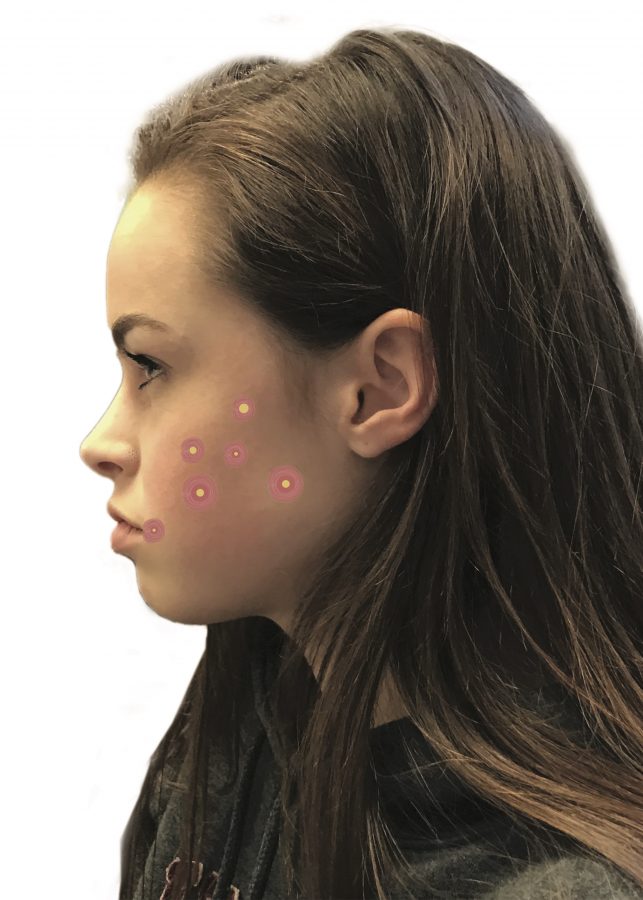Acne, a chronic inflammatory skin condition, is characterized by blackheads, whiteheads, pimples and deeper lumps that occur on the face, neck, chest, back, shoulders and upper arms.
Acne types go beyond the surface
From blackheads to cysts, breakouts can be a major factor in self-image issues.
After reluctantly rolling out of bed in the morning, many adolescents meet a mirror to what can be an aggravating revelation of painful red bumps or small black and white spots, that somehow emerged overnight.
“It definitely changed how I viewed my physical appearance,” senior Mackenzie Maly, who has struggled with acne since the beginning of her freshman year, said. “I was pretty insecure, especially because I didn’t know a lot of people who were going through the same thing as me at the time.”
Although she once felt isolated, Maly is one of 50 million Americans who endure acne — making it the most common skin condition in the United States, according to the National Institute of Arthritis and Musculoskeletal and Skin Diseases.
Acne is also classified as a skin disease affecting the skin’s oil glands that are connected by follicles to pores under the skin. Oil from the glands can carry dead skin cells through follicles to the skin’s surface, most commonly causing acne growth on the face, neck, back, chest and shoulders.
“I’ve been taking medication for the last couple of years for my cystic acne — and that’s helped a little — but I’ve always had to change or alter my treatments,” freshman Ella Beard, who has fought against acne since first breaking out in sixth grade, said. “It’s definitely been a journey.”
Cystic acne occurs when follicles become clogged and eventually rupture. Adults and adolescents may also suffer from other types of acne including blackheads, whiteheads, papules, pustules and nodules.
Although acne may be an issue throughout puberty and adulthood, adolescents particularly tend to be less compliant in following treatment plans created by their clinicians, according to Dr. Ella Toombs.
“I’ve always had to change or alter my treatments…it’s definitely been a journey.”
Ella Beard
“Adolescents typically don’t understand the long-term effects of not treating acne, which is mostly permanent scarring,” Toombs, who specializes in dermatology, said. “They don’t think through the idea of ignoring their treatment plans.”
Dermatologists suggest oral or topical over-the-counter or acne prescription drugs, with multiple treatments suggested to a patient depending on the severity of her condition.
Despite a plethora of treatment options, some teens are unaware of the time and money placed into devising a specialized skincare plan and therefore become unappreciative, according to Toombs.
“Teens are usually not the ones spending the money that medicine or office visits require, so they also might feel like they don’t have much to lose,” Toombs said.
Approximately 85 percent of young adults between 12 and 24 experience at least minor acne, with national annual acne treatment costs exceeding $3 billion, according to the American Academy of Dermatology.
The condition may also cause psychological issues such as poor self-image, depression and anxiety.
“My acne has made me more self-conscious overtime,” Beard said. “It’s gradually led up to now, which is the most problematic my skin has been. I always feel the need to wear makeup and cover it up. I really wish I didn’t have to wear makeup because I just don’t like doing it, but I always feel the need to do it.”
Although younger adolescents struggling with acne may also suffer from negative self-image, self-confidence increases with age, according to Maly.
“No one ever notices acne more than you do,” Maly said. “I would look at a pimple on my skin and think my life is over, but it’s really not. A lot of people are going through the exact same thing.”

